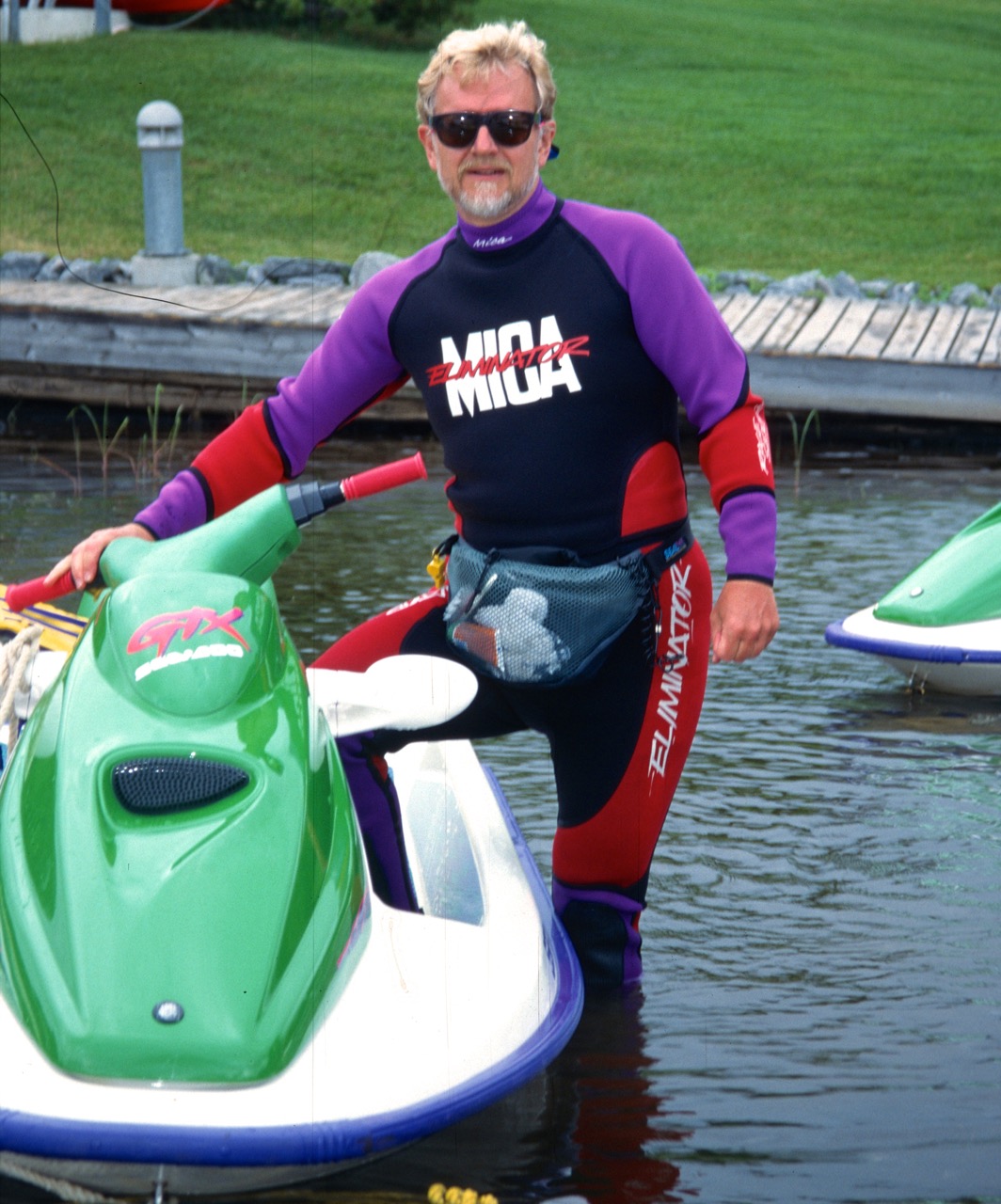Try Hi-Tech Paddling Gear Instead…
Related: Weather Protection Gear
I tried it, but now I say nuts to neoprene wetsuits on my PWC adventures. Contrary to what a quick glance at most personal watercraft catalogues would lead experienced jet ski riders and PWC beginners to expect, my observation is that most riders don’t wear neoprene on Sea Doo tours.
Myself included – here’s what I wear. Yet, those catalogue pages are festooned with smiling models decked out in neoprene. Ready to ride on their Sea Doo, jet ski or waverunner personal watercraft in Ontario and throughout Canada. Are they nuts? Here’s my product review…
Few Look Good in Neoprene Wetsuits…
First off, none of those models look like me. Or for that matter, like most of the demographic that can actually afford to buy a personal watercraft. I suppose neoprene might have some use if your sole purpose is to show off a trim, muscled bod. But most of us normal PWC owners have more that we’re trying to hide than put on display. So why on earth would we choose neoprene?
Neoprene Wetsuits are Hard to Put On…
Most of us don’t have the time, energy or dexterity it takes to wriggle into a neoprene wetsuit. It’s like trying to struggle into a pair of size-too-small designer jeans. Except with a lot more friction to overcome and body parts to tuck in. Why go to all that effort just to exhibit every bulge, sag and love handle? Imperfections that we spend every other waking minute trying to camouflage?
Neoprene Wetsuits are Harder to Get Off…
And once donned, there’s the strong possibility that a neoprene west suit will stay on permanently. Unless one has several friends to help peel it off you after it’s wet and sticky inside. Cutting it off is always a last resort, but not the worst option. The worst would be keeping the wet suit and trying to wear it again. I won’t even broach the delicate subject of what the odds are of getting a neoprene wet suit down in time to take an urgent leak. Except to comment that this may be where their name actually came from.
Neoprene Wetsuits are not High Tech…
Neoprene wet suits may be good at keeping the wearer warm when it’s cold. So does just staying at home if the water or air temperatures are too chilly. But neoprene wet suits can also be cold and clammy feeling. They don’t breath, and have no ability to adapt as the day gets hotter. Nothing quite as uncomfortable either, as sitting in a restaurant for lunch while sheathed in a neoprene wet suit. Even if I could get it off, I’d be bare-naked underneath, right? I guess really sloppy eaters would appreciate it as a body bib.
Prefer Layering…
So what happened to layering? I wear a quick drying base layer. Over which goes a windproof, waterproof and breathable shell (& pants). And then my PFD. If I need more warmth, I should have thought twice about setting out that day. But I do have an insulated Gore Tex™ rain suit big enough to go over everything else I’m already wearing. As the mercury rises, I strip layers off easily. I may not be as sleek and streamlined as I might be in neoprene. But then this isn’t the Olympics, is it? Besides, I’m quite certain that my neoprene-encased bod would flunk any aerodynamic wind tunnel testing anyway.
Why Neoprene Wetsuits…
Assuming that the PWC catalogue people must know something I don’t, I’ve searched high and low for good reasons to wear neoprene while riding a jet ski. I can see it for racing, offshore ocean riding, and any style of PWC riding where you’re gonna get splashed or dunked a lot. Or if you use your Sea Doo watercraft as a submarine. None of which describes what touring jet ski riders do, so who needs neoprene?
Avoid Orifice Enemas…
Then I watched the Sea-Doo safety DVD that comes with each new model. The program spent an inordinate amount of time talking about the potential dangers of internal injuries. Apparently, these can occur from water being violently injected into body orifices if I get in the way of the operating water jet at the back of my PWC. Or if I fall off my jet ski butt first at high speed. Then, neoprene can provide some protection.
Now, I’ve never heard of or seen one of these ‘orifice enemas’. But if they are a real concern, I’m still not about to suffer neoprene through every Sea Doo ride just in case. Instead, I’ll just keep away from the jet, ride with butt firmly planted and cheeks tightly clenched. And say nuts to neoprene!
If you enjoyed this post, check out my other product reviews…
The tips and advice in this article are the opinions of the author, may not work in every situation and are intended only for the convenience and interest of the reader, who has the personal responsibility to confirm the validity, accuracy and relevancy of this information prior to putting it to their own use.

